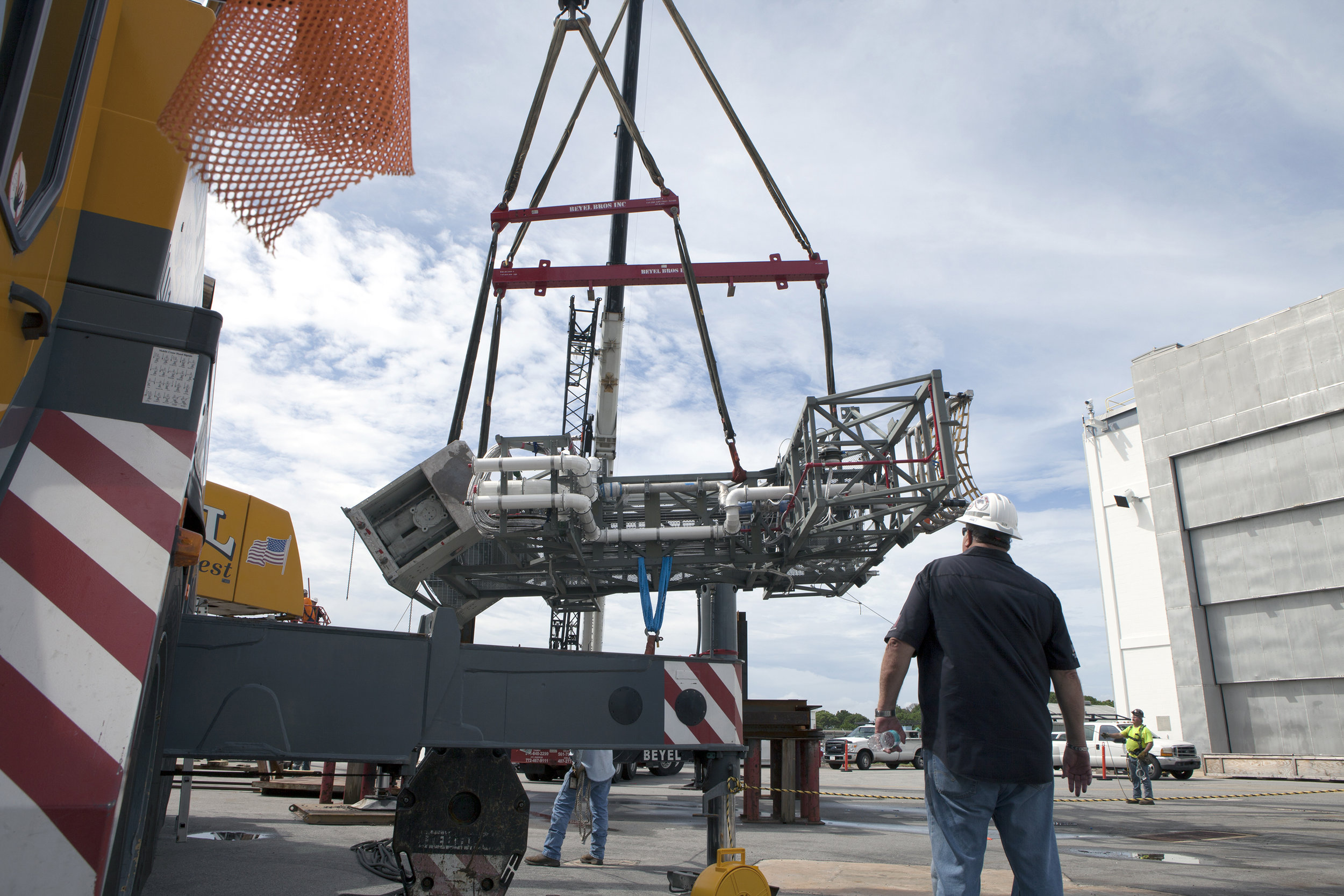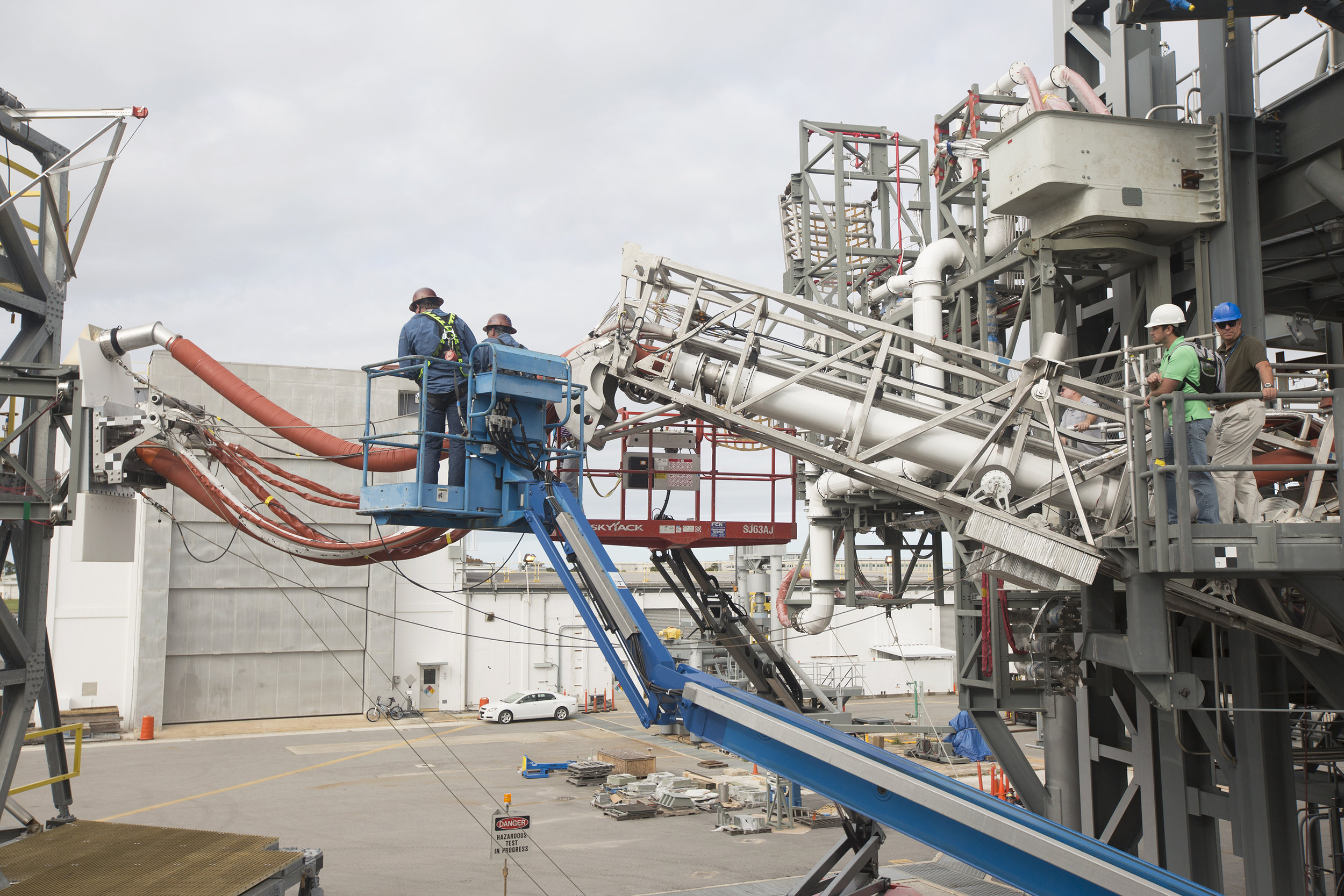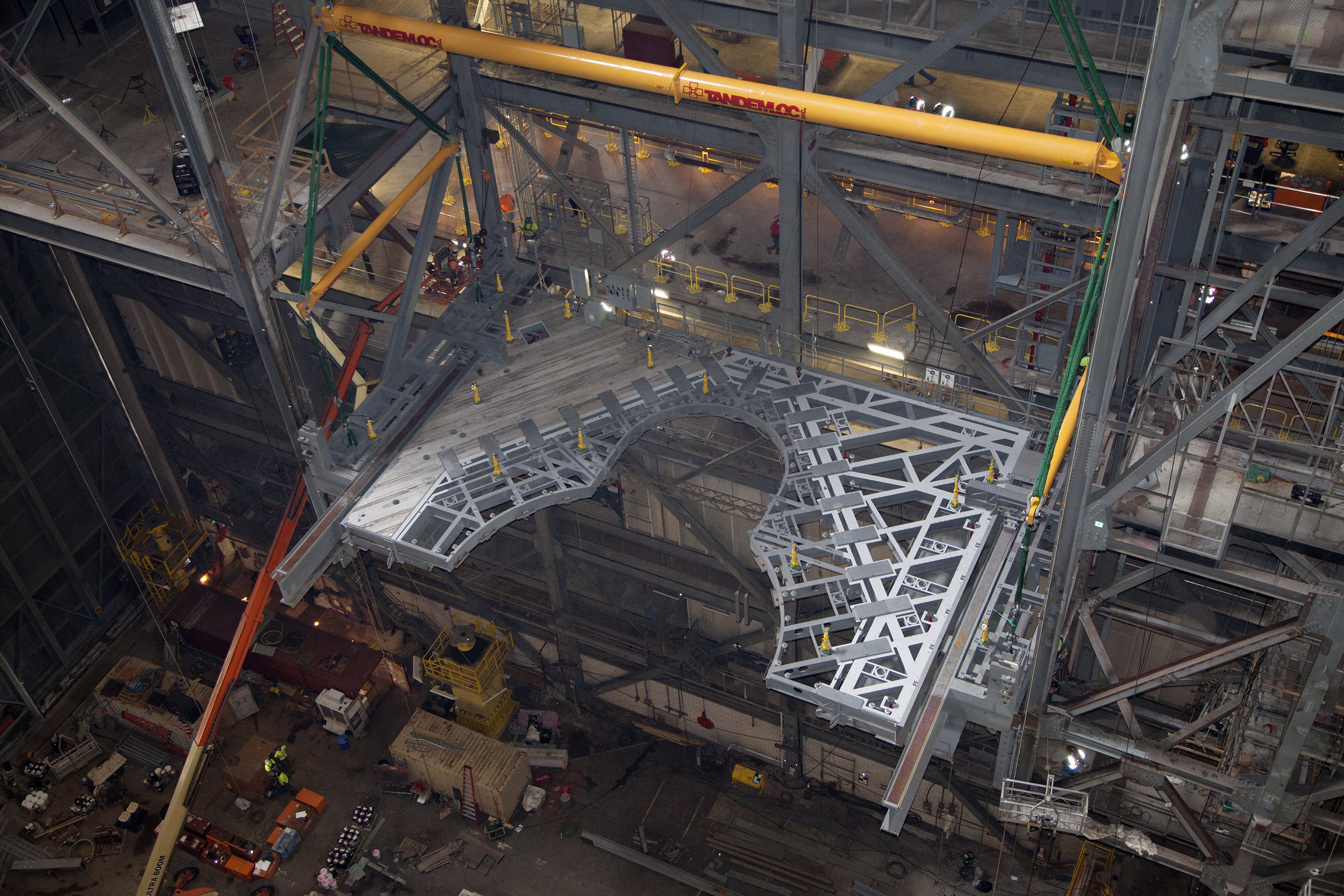Rethinking Work Authorization Procedures
at NASA Kennedy Space Center
As NASA nears completion constructing and manufacturing the next-generation heavy-lift rocket, Space Launch System (SLS), hardware components are beginning to arrive at Kennedy Space Center (KSC) for ground processing, which includes integration and stacking for launch. TOSC provides overall management and implementation of ground systems capabilities, flight hardware processing & launch operations. As a research project, some of the questions our team sought to understand and investigate included:
What design patterns can better support procedure execution for ground processing maintenance? What breakdowns and unreliable processes are used in maintenance tracking and execution today? Given the constraints of WAD operation, what interfaces best support task completion? How do different environments impact procedure execution and documentation? This project was completed in the Spring term of Carnegie Mellon's Master of Human-Computer Interaction program.
Research Methods
Secondary Research: Literature review of research journals, NASA/TOSC/Jacobs work statements and online documentation, and existing data provided by our client.
Field Observations: Direct observations of emergency departments, urgent cares, health and wellness centers and doctor's offices.
Qualitative & Informational Interviews: Interviews with NASA, TOSC, as well as Arc Jet engineers and technicians.
Competitive Analysis: Study and evaluation of industrial, manufacturing, and field-service work execution software platforms as well as emerging technologies being developed within these domains.
Analogous Domains: Research on technician and engineer user needs within domains such as industrial manufacturing, field repair & maintenance, telemedicine, and more.
Affinity Diagramming: Aggregation of primary research and interview insights to identify issues, breakdowns, opportunities, reveal patterns, and build a shared understanding of the problem space.
Concept Mapping: Build concept maps to represent relationships and organize our knowledge of the healthcare space.
Journey Map: Sample user flow (both technician and engineer) to identify key interactions, motivations, emotions, and breakdowns.
Storyboarding: Narrative-based illustration of possible use cases, problems solved, or opportunities for design innovation.
Discovery
NASA uses Work Authorization Documents (WADs) to provide step-by-step instructions to engineering teams to ensure that hardware is built & maintained safely & reliably. Workers execute the steps exactly as detailed in the WAD, checking off each step as they go. WADs support the completion of activities and tasks such as building, moving, and testing of flight hardware and the necessary ground processing required for assembly. WADs must be followed precisely as they have been written to ensure the work has been executed reliably and consistently. The as-worked process must be documented rigorously to mitigate potential risks and dangers. Process, in this sense, is a primary tool to mitigate risk.
Interviews
While visiting Kennedy, we were fortunate to visit the following sites and facilities, and speak with roles such as project manager, test director, and quality engineers to learn more about work authorization procedures. We later spoke with a TOSC/Jacobs technician via a telephone interview.
Project Stakeholders
Process
The process of creating and implementing a Work Authorization Document involves many phases involving buyoff & approval from relevant signatories in engineering, safety, and quality assurance long before the work order gets into the hands of a technician or work execution team.
Work Authorization Sequence Flow
The following three sequence flows correspond to the processes of the respective NASA facility or location visited at Kennedy. While these are not exhaustive documents (particularly so for Launch Pad and LCC), they document the procedures and interactions of stakeholders described and encountered while primary research was conducted on-site at Kennedy Space Center. The moment or event of an alteration is marked in yellow as in above.
Software Architecture
Analogous Domains
Field service technicians make use of a number of technology solutions for everyday work orders including repair and maintenance. Tablet interfaces tend to be most prominent. Our team recognized the need for a compact and efficient technology tool which could capture data received within the field and surface relevant project or technical information to technician at the right time.
A wind turbine technician using a tablet interface for routine field repair & maintenance
Oil pipeline and gas utility field service technician making use of a tablet app
Aircraft and OEM crews make use of apps to reduce downtime required for maintenance.
Design Objectives
Experience Breakdowns
In the event of an alteration, paper WADs are hand-delivered (usually by riding around KSC on a bicycle) to signatories for buyoff. Upon closeout, these are stored in a filing cabinet. WADs in Solumina or Maximo are returned to the original author, All changes undergo the same buyoff process as in authoring.
While the concept of a Modification implies that the feedback, discoveries, & lessons learned from Alterations will be considered in future WAD processes moving forward, critical information on the context, history and technician feedback relevant to that Alteration go missing in the process.
Research Findings
While our team never managed to view work execution by technicians first-hand from a fly-on-the-wall perspective, a number of key workarounds and "hacks" which stakeholders implemented demonstrate the breakdowns of the process overall on account of its lack of efficiency.
While the goals of this three-month research initiative included the synthesis of institutional research including the a number of design breakdowns and oppor
Technology Prototype Sketch Concept 1
Early rendition of a tablet interface for real-time collaboration between technicians and engineers supervising work execution on-site.
Technology Prototype Sketch Concept 2
Early sketch concept of a heads-up-display for real-time work execution between a technician in the field and a corresponding engineering team.









